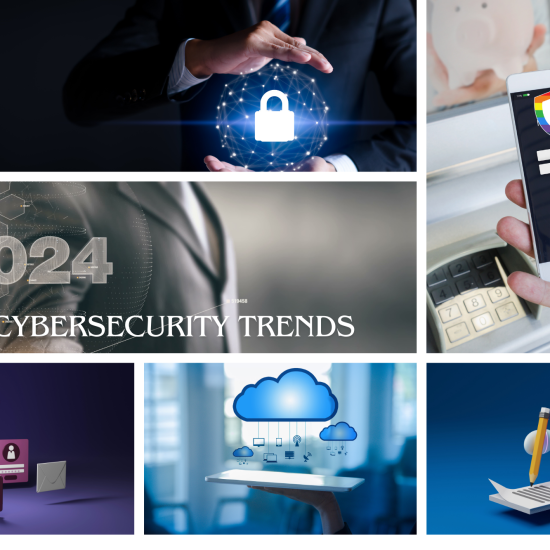Cybersecurity and IoT
As the Internet of Things (IoT) continues to grow in popularity, so does the need for IoT cybersecurity. IoT refers to the interconnected network of devices, vehicles, and appliances that can communicate with each other via the Internet without the need for human intervention. This technology has the potential to revolutionize many aspects of modern life, from home automation to healthcare. However, with this increased connectivity comes an increased risk of cyber-attacks. Therefore, it is critical to ensure that IoT devices are secured against cybersecurity threats to protect against the theft of sensitive data, system disruptions, and more. While IoT promises to bring efficient business results across several industry verticals, organizations just focusing on connectivity to win the digital transformation race and putting security in the backseat would place the entire ecosystem at risk of fraud and attack.
In this article, you will read about:
What is IoT?
Advantages of IoT
Real-world applications of IoT
Challenges associated with IoT
The importance of IoT cybersecurity
Recent cyberattacks on IoT
Risks and Threats to IoT Cybersecurity
Challenges in IoT cybersecurity
Key principles for securing IoT devices
Best practices for IoT cybersecurity
Emerging Technologies for IoT Cybersecurity
What is IoT?
IoT is a technology that allows for the interconnectivity of devices and machines, which can range from smart homes and appliances to industrial systems and even vehicles. The idea is that these devices can be controlled and monitored remotely through the internet, using specialized software and sensors.
As technology has developed, IoT has gained in popularity and adoption. By 2025, it is estimated that there will be over 75 billion IoT devices worldwide. This massive growth has led to increased attention to the security of these devices, as they have the potential to be hacked and exploited by cybercriminals. A significant redesign of the existing IoT infrastructure may be required to execute standard security protocols because of technical limitations. Most IoT devices possess minimal computing capacities, memory, and power. Thus, advanced security measures cannot be easily implemented.
Advantages of IoT
An IoT (Internet of Things) system is an advanced automation and analytics system that makes use of Networking, Big Data, Sensing, and Artificial Intelligence to provide a complete solution. It provides the following benefits:
- Improved customer engagement: IoT facilitates a better customer experience by automating tasks. In a car, for instance, any issue will be detected automatically by sensors. It will be notified to both the driver and manufacturer.
- Technical optimization: IoT has improved technology and made it more efficient. It has turned even old “dumb” devices into “smart” ones by making them able to transmit data over the internet, facilitating communication with people and other IoT-enabled devices. For example, coffee machines, smart toys, smart microwaves, wearables, and electronic gadgets at home such as washing machines, refrigerators, air conditioners, etc.
- Ease of Access: IoT has now enabled access to real-time information from (almost) any location. All you need is a smart device connected to the internet.
- Improved Insights: Currently we rely on superficial insights to make decisions, but IoT provides real-time insights that lead to more efficient resource management.
- New business opportunities: By collecting and analyzing data from the network, you can uncover new business insights and generate new opportunities while reducing operational costs.
- Effective Time Management: Overall, the Internet of Things can save you a lot of time. While we commute to work, we can read the latest news on our phones, browse a blog about our favorite hobby, or shop online.
- Improved security measures: Using IoT, access control systems can provide additional security to organizations and individuals. As an example, IoT technology in surveillance can assist in improving security standards in an organization, as well as identifying any suspicious activity.
Some of the most common real-world applications of IoT are as follows:
- Smart Homes: A smart home is a home with computer gadgets that allow for remote administration of appliances and systems like heating and air conditioning. Due to IoT Home automation, home security measures have also evolved. Consumers may use their phones to watch CCTV security footage and operate their security systems from everywhere on the planet. Today, even parents can watch their toddler attending playschool.
- Connect Health: Connected health is an interactive-technical paradigm for managing and delivering healthcare that relies on technology to offer services offsite. The Internet of Things (IoT) is a network of physical objects that employ connections to allow data to be exchanged. These gadgets aren’t always the most advanced technological breakthroughs. They help healthcare professionals perform jobs more quickly by streamlining processes
- Wearables: Wearable technology, sometimes referred to as “wearables,” is a class of electronic devices that may be worn as accessories, attached to clothes, implanted in one’s body, or even tattooed on the skin. Wearable devices have emerged as one of the earliest industries to deploy the IoT at scale. Various wearable devices are available today, such as Fit Bits, heart rate monitors, and smartwatches.
- Connected Cars: A connected car is a car that has an internet connection(owned), typically through a WLAN, which enables it to share the particular internet service and also the data associated with it, with other devices not only within the car but also outside the car. Some of the leading automakers are working on bringing the next revolution to the car industry, including Tesla, BMW, Apple, and Google.
- Hospitality: By applying IoT to the hotel industry, a higher level of service quality is achieved. Various interactions can be automated by using electronic keys that are sent directly to the mobile devices of guests. Therefore, IoT technology enables integrated applications to manage activities such as tracking guests’ locations, sending offers or information about interesting activities, placing orders for room service or room orders, and automatically charging the room account.
- Farming: A variety of tools are being developed to deal with Drip Irrigation, understanding crop patterns, Water Distribution, drones for farm surveillance, etc. Farmers will be able to increase yields and address concerns using these methods.
Challenges associated with IoT
Some challenges associated with IoT are:
- Privacy: Connected IoT devices are vulnerable to hacking. Many IoT devices collect and transmit personal data over an open network without encryption, making it easy for hackers to access. Hackers may also use cloud endpoints to attack servers.
- Insufficient testing & Outdated product: In a fast-paced market like IoT, many companies or manufacturers rush to start releasing their products and software without doing enough testing. Many of them don’t provide timely updates as well. Unlike other devices such as smartphones, IoT devices are not updated, which can leave them vulnerable to data theft. Thus, IoT devices should be tested thoroughly and updated as soon as new vulnerabilities are identified to maintain security.
- Lack of knowledge and awareness: Despite being a growing technology, people do not know much about IoT. A major security threat associated with IoT is the user’s lack of knowledge and awareness of its capabilities. This poses a threat to all users.
- Network Connectivity: Network connectivity can be challenging for many IoT devices. Particularly if such devices are widely dispersed, in remote locations, or if bandwidth is severely limited.
- Reliability: Given the highly distributed nature of IoT devices, it can be difficult to ensure the reliability of IoT systems. Various conditions can affect the components that make up an IoT system, such as natural disasters, disruptions in cloud services, power outages, and system failures.
The importance of IoT cybersecurity
The importance of IoT cybersecurity cannot be overstated. As more and more devices become connected to the internet, the potential for cyber-attacks grows. This can lead to a variety of consequences, from identity theft and financial loss to the compromise of sensitive data and even physical harm.
Therefore, IoT devices must be secured against cybersecurity threats. This means implementing appropriate security measures at every level, from hardware to software, as well as ensuring that users are educated about the risks and how to protect themselves.
Recent cyberattacks on IoT
As we rely increasingly on smart, interconnected appliances in our lives, billions of “things” can threaten personal confidentiality and public safety through cyberattacks and external interference. Security is one of the greatest considerations concerning IoT, which needs to be acknowledged along with the overarching need for safety, as the physical world is intricately linked to both concerns. Hackers have the power to launch assaults and enter thousands or millions of unprotected connected devices, destroying infrastructure, taking down networks, or accessing confidential data. Here are some of the recent cyber-attacks demonstrating IoT vulnerabilities:
The Mirai Botnet
An IoT botnet (a network of computers, each of which runs bots) was used to execute the worst DDoS attack against Internet performance management services provider Dyn back in October 2016. As a result, several websites went offline, including majors like CNN, Netflix, and Twitter.
After becoming infected with Mirai malware, computers continuously search the web for susceptible IoT devices before infecting them with malware by logging in using well-known default usernames and passwords. These gadgets included digital cameras and DVR players, for example.
The Verkada hack
Verkada, a cloud-based video surveillance service, was hacked in March 2021. The attackers could access private information belonging to Verkada software clients and access live feeds of over 150,000 cameras mounted in factories, hospitals, schools, prisons, and other sites using legitimate admin account credentials found on the internet.
Over 100 employees were later found to have “super admin” privileges, enabling them access to thousands of customer cameras, revealing the risks associated with overprivileged users.
Cold in Finland
In November 2016, cybercriminals turned off the heating in two buildings in the Finnish city of Lappeenranta. After that, another DDoS assault was launched, forcing the heating controllers to reboot the system repeatedly, preventing the heating from ever turning on. This was a severe attack since Finland experiences severely low temperatures at that time of year.
The Jeep Hack
In July 2015, a group of researchers tested the security of the Jeep SUV. They managed to take control of the vehicle via the Sprint cellular network by taking advantage of a firmware update vulnerability. They could then control the vehicle’s speed and even steer it off the road.
Stuxnet
Stuxnet is probably the most well-known IoT attack. Its target was a uranium enrichment plant in Natanz, Iran. During the attack, the Siemens Step7 software running on Windows was compromised, giving the worm access to the industrial program logic controllers. This allowed the worm’s developers to control different machines at the industrial sites and get access to vital industrial information.
The first indications of a problem with the nuclear facility’s computer system surfaced in 2010. When IAEA inspectors visited the Natanz plant, they saw that a strangely high percentage of uranium enrichment centrifuges were breaking. Multiple malicious files were later found on Iranian computer systems in 2010. It was discovered that the Stuxnet worm was included in these malicious files.
Iran hasn’t provided detailed information on the attack’s results, but the Stuxnet virus is believed to have damaged 984 uranium-enrichment centrifuges. According to estimates, this resulted in a 30% reduction in enrichment efficiency.
Risks and Threats to IoT Cybersecurity
While IoT technology has the potential to make our lives easier and more convenient, it also comes with inherent security risks. Understanding these risks and threats is crucial to protecting against them.
One of the main risks associated with IoT devices is that they often lack sufficient security measures. This can make them vulnerable to attacks, including:
Unauthorized access
Hackers can gain access to IoT devices and networks, allowing them to steal sensitive data or take control of the devices.
Malware and viruses
IoT devices can be infected with malware or viruses, which can cause them to malfunction or be used for malicious purposes.
Data breaches
IoT devices can collect and transmit sensitive data, such as personal or financial information. If this data is not properly secured, it can be stolen by cybercriminals.
Denial of Service (DoS) attacks
Attackers can flood IoT networks with traffic, causing them to become overwhelmed and unavailable.
Securing devices at every level
Securing IoT devices requires a comprehensive approach that addresses potential vulnerabilities at every level, from the hardware to the software. This includes:
Hardware security
Ensuring that devices are designed and manufactured with security in mind, such as implementing secure boot processes and using tamper-proof hardware.
Network security
Securing the communication channels between devices and the network, such as implementing firewalls and using encryption.
Application security
Ensuring that the software and applications running on IoT devices are secure and free from vulnerabilities, such as implementing regular security updates and patches.
Challenges in IoT cybersecurity
While there are many best practices, key principles, and emerging technologies that can help secure IoT devices, there are also many challenges and obstacles that organizations and individuals face in securing these devices. This section will discuss some of the challenges in IoT cybersecurity.
Some of the challenges and obstacles in IoT cybersecurity include the following:
- Large-scale deployment: With millions of IoT devices in use worldwide, it can be difficult to manage and secure all of them, especially as the number of devices continues to grow.
- Complexity: IoT devices can be complex and diverse, making it difficult to create a unified security framework or solution.
- Legacy devices: Many older IoT devices were not designed with security in mind, and they may not be able to support the latest security protocols and technologies.
- Cost: Securing IoT devices can be expensive, and many organizations may not have the resources to implement the latest security technologies or practices.
Key principles for securing IoT devices
Some key principles for securing IoT devices include:
- Device authentication: Verifying the identity of devices and ensuring that only authorized devices can access the network.
- Encryption: Using encryption to secure the communication channels between devices and the network, as well as protecting sensitive data.
- Secure boot: Secure Boot is when OS boot images and validates code against the hardware before being used in the boot process. The hardware is already made to authenticate only the codes according to the security credentials that we trust. In simple words, it makes sure that the version of the OS and the boot software are from the intended manufacturer and have not been tampered with by malicious or malware third parties.
Best practices for IoT cybersecurity
While securing IoT devices requires a multi-layered approach and implementing key security principles, some best practices can help ensure the security of these devices. Here are some of the best practices for IoT cybersecurity.
Some best practices for IoT cybersecurity include:
- Regular software updates: Keeping software and firmware up to date can help ensure that devices are protected against known vulnerabilities.
- Network segmentation: Segmenting IoT devices on a separate network can help prevent unauthorized access and limit the impact of potential cyber-attacks.
- Strong password policies: Ensuring that passwords are strong, unique, and changed regularly can help prevent unauthorized access to devices and networks. Use Rainbow Secure Graphical Multi-factor Login Authentication to prevent unauthorized access and secure your device.
Security is one of the biggest issues with the IoT. The sensors collect extremely sensitive data in some cases. Too many IoT devices give little thought to the basics of security, like encrypting data in transit and at rest. There are flaws in software with even old and well-used code. Although they are discovered regularly, still many IoT devices cannot be patched, which means they are permanently at risk. Flaws have left smart home devices like refrigerators, ovens, and dishwashers open to hackers. Researchers found 100,000 webcams that could be hacked with ease, while some internet-connected smartwatches for children have been found to contain security vulnerabilities that allow hackers to track the wearer’s location, eavesdrop on conversations, or even communicate with the user.
When the cost of making smart objects becomes negligible, these problems will only become more widespread and intractable. All of this applies in business as well, but the stakes are even higher. Connecting industrial machinery to IoT networks increases the potential risk of hackers discovering and attacking these devices. Industrial espionage or a destructive attack on critical infrastructure are both potential risks. That means businesses will need to make sure that these networks are isolated and protected, with data encryption with the security of sensors, gateways, and other components a necessity. The current state of IoT technology makes that harder to ensure, however, as does a lack of consistent IoT security planning across organizations.
The IoT bridges the gap between the digital world and the physical world, which means that hacking into devices can have dangerous real-world consequences. Hacking into the sensors controlling the temperature in a power station could trick the operators into making a catastrophic decision.
How can Rainbow Secure help?
Right amount of data and system access to the right person or role at the right time is the key to organizations being able to use digital tools and platforms to serve the customer base and stay compliant.
Next Generation Rainbow Secure platform is a modern identity and single sign-on solution for your business across on-premises and cloud environments. It’s backed by an experienced team of cloud and security experts, years of innovation, and partnerships with leading cloud platforms. Rainbow Secure is a Leader in Smart and Secure Digital Solutions that work for you.
Secure Workforce & Customer Login: Use Authentication Plug-in by Rainbow Secure to secure workforce and customer logins. In this plug-in, you get a multi-dimensional password, passwordless login solutions with AI monitoring, Risk Analytics, and location fencing.
IoT Friendly Security: IoT platform developers can secure their cloud endpoints, and user logins (both admin and customer) against unauthorized access and scripted malware attacks using easy-to-adapt and support multi-layer interactive rainbow secure authentication solutions and services that include but are not limited to security assessment, API Security, secure user onboarding, and risk analytics.
Secure Data and its Backups: We provide Cloud-based data vault and data archive solutions backed by Microsoft Azure and secured by our authentication plugin and industry best practices to give you ransomware protection, and help with data governance and disaster mitigation.
Database Security: We provide technical consulting services to Secure Databases in the cloud and on-premise. You get the best protection for your data in databases using native and third-party security tools.
Meet Compliance Requirements: Use Authentication Plug-in by Rainbow Secure with your business application and in SSO (Single Sign-on) and meet industry standards and compliance regulations such as NIST, ISO, FTC, SOX, SOC2, CMMC, CMMI, HIPAA, PCI, and others.
Securely communicate and Collaborate: Use Secure Business Email by Rainbow Secure and get protection against account takeover, phishing, ransomware, and automated login cyber frauds. In this email, you get options to send encrypted emails, single sign-on with Office 365, and Google, and 1 TB one drive storage.
Connect Business applications: Get one unified login using Rainbow Secure Single Sign-On
Manage User Onboarding / Offboarding using Rainbow Secure IAM
Verify User using Smart Multi-factor MFA. Smart Multi-Factor Authentication from Rainbow Secure which adjusts to your use case, reduces the cyber liabilities of a business from stolen credentials and improves productivity, and enhances user experience.
Do you have more questions about how to secure your cloud endpoints, and user logins (both admin and customer) against unauthorized access and scripted malware attacks using easy-to-adapt multi-layer interactive rainbow secure authentication solutions and services? Contact us today. Email us at Hello@rainbowsecure.com







